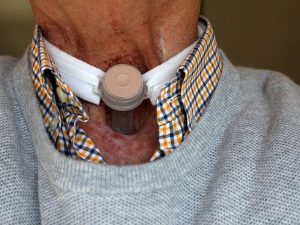New Delhi – Achalasia is a disease where the function of the oesophagus stops working overtime. It is thought to be neural degeneration of the selective nerve fibers in the body of the oesophagus and the valve at the top of the stomach. It is a rare disease with an estimated prevalence of 10.82 and incidence of 0.3–1.63 per 100,000 adults per year.
In this disease, oesophagus muscles do not squeeze and the sphincter muscle does not open, so food cannot pass through the valve top on the stomach. Patients begin to experience trouble swallowing. They cannot swallow regular food; they have trouble swallowing liquids and they get a sensation that stuff just sits in their esophagus. Some may need to drink a lot of fluids to get food into the stomach and others may feel pain and/or discomfort after eating. Some patients suffering from achalasia may have undigested food come up after eating or when lying down.
In this article, Dr Kapil Sharma, Senior Consultant Gastroenterology at Batra Hospital and Medical Research Centre, New Delhi talks about achalasia and one of its treatment techniques called the Per Oral Endoscopic Myotomy or POEM.

The common symptoms of achalasia may include:
Regurgitation of food
Chest pain or pain felt in the back, neck, and arms.
Difficulty swallowing liquids and solids.
Heartburn
Unintentional weight loss
Cough
Diasgnosis of achalasia
Here is how achalasia can be diagnosed:
- Oesophagal manometry: During oesophageal manometry, a thin, flexible tube (catheter) that contains pressure sensors is passed through nose, down into esophagus and then into stomach. Oesophageal manometry provides information about the movement of food through the oesophagus into the stomach. The test measures the force and coordination of oesophageal muscles as they propel food into stomach. This test also diagnoses other swallowing disorders and classify Achalasia to customise treatment accordingly.
- Upper Endoscopy: In this test flexible tube equipped with a light and camera inserted into the food pipe through throat to examine the inside of food pipe and stomach. Endoscopy can be normal or may show retained saliva, undigested food, or liquid in the food pipe a without any blockage of the oesophagus by tumour and narrowing with subjective evidence of resistant at valve at top of stomach while negotiating tube.
- X-Ray of upper digestive System: X-rays are taken after the patient swallows chalky liquid that coats and fills the inside lining of the food pipe and visualisation of a dilated proximal food pipe with a narrowed junction just above the stomach giving the characteristic “bird beak” appearance is highly suggestive of achalasia. Both endoscopy and barium esophagram is only complementary to esophageal manometry and lack sensitivity for accurately diagnosing achalasia.
Major Treatment of Achalasia
- Pneumatic dilation: A balloon is inserted by endoscopy into the centre of the esophageal sphincter and inflated to enlarge the opening. This outpatient procedure may need to be repeated if the oesophageal sphincter does not stay open. Nearly one-third of people treated with balloon dilation need repeat treatment within five years. It is uncontrolled and forceful dilation sometimes can result into oesophageal perforation although response is good among early or evolving Achalasia
- Botox: Botox is generally recommended only for people who are not good candidates for Balloon dilation, endoscopic and laparoscopic myotomy because of age or overall health and presence of significant comorbidities. Botox injections typically do not last more than six months.
- Surgery ( Heller Myotomy): During this procedure, five or six small incisions are made in the abdominal wall and laparoscopic instruments are inserted. Then muscle cut along the esophagus, starting above the lower esophageal sphincter and extending down onto the stomach a little way
- Per Oral Endoscopic Myotomy ( POEM): This new Less Invasive and effective procedure eliminates the need for abdominal incisions. It is a major advance in treatment of achalasia and is less invasive and less traumatic to the body.
How is the POEM procedure done?
A flexible tube called an endoscope is passed through the mouth into oesophagus and make a small cut in the inner most layer of the esophagus and then reach between the layers of the oesophagus to selective cut that stiff muscle and then close the hole in the esophagus with clips. This whole procedure is being done with an endoscope without having any incisions on your abdomen. Carbon dioxide gas ( Co2) is used for insufflation during these procedures because Co2 absorbed very rapidly hence air insufflation related complications can be avoided in this procedure.
It can be done in advance cases of Achalasia like Sigmoid Oesophagus and the presence of diverticula. POEM usually not require an additional anti reflux procedure.
POEM is also effective for other swallowing disorders like a diffuse oesophageal spasm, ineffective oesophageal motility and Jackhammer Oesophagus.
Procedure time is usually one hours and some time can be prolonged due to difficult procedure in view of long standing disease , huge dilation and unexpected bleeder during myotomy.
However, POEM is not without risks. As with other operations, there are risks of bleeding and rarely leak which may result in a chest infection. It has been shown to increase the risk of long-term reflux, although rarely troublesome and most of times controlled with anti acid tablets.
